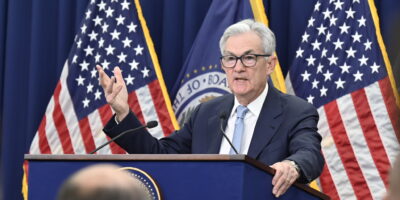Why free-banking?
The need for and convenience of a central bank are usually taken for granted. To say that a central bank is a good institution and, therefore, needed, is not enough. Unfortunately, the assumption that central banks are necessary seems to weigh more heavily than the facts that suggest otherwise.
Good and bad are relative terms. With respect to what then is a central bank good? Some might say to the absence of a central bank- or more specifically, to the presence of a free banking regime.
Historical records, however, show that free banking outperforms central banks in most, if not all, of the cases.
A free banking regime is such where the market for money and banking is free of specific regulation (save, of course, illegal activities such as the violation of third party property rights.) Let me be clear. The absence of a central bank is not equivalent to free banking. The absence of regulation is equivalent to free banking. This is why to think of the pre-Fed era in the United States as a case of free banking shows a superficial understanding of what an unregulated –free– market is.
The literature on free banking is vast. Let me just give a brief description and comment on a couple of illustrative historical cases. First, under free banking, each bank is free to issue their own convertible banknotes. Convertible to what? To whatever functions as base money in the economy. Historically, this has been gold, but this does not need to be the case. It could be, like Selgin describes in his Theory of Free Banking, that the Federal Reserve shuts down the FOMC and that the USD becomes the base money to which private convertible banknotes are convertible. Whether or not the USD will eventually be replaced by gold, silver, or any other asset is up to the market process to sort out.
Second, because all banknotes are convertible to the same base money, there is no multiplicity of units of account. Under this regime, there should be no fear of confusion about the multiplicity of prices. If today you travel to Hong Kong, Ireland, or Scotland, you’ll see a strong presence of private money in circulation, but you won’t see multiplicity of units of account. It could be said that the US banking system is not the most developed and flexible of the developed world. On the contrary, the heavy regulation imposed on this market suggests that lot of improvement is possible and needed.
Third, the stability of the system comes from banks competing with each other for deposits and therefore for base money. Surely, mathematical models showing how banking without central banks are instable can be developed. With the right assumptions, it is possible to shows anything in a mathematical model. Free banking shows a remarkably good performance, despite the claims that many academic models try to make.
Let me now comment on two examples that show that bank failures are not the same as bank runs. This would likely be the case under a fiat currency regime managed by central banks, but free banking works under a different regime and therefore with different incentives. The outcome is a different performance.
Consider first free banking in Scotland (1716 – 1844). In 1772 the “Ayr” bank collapsed, bringing other smaller banks down with it. As spectacular as the Ayr Bank failure might have been, the Scottish free banking system did not suffer a bank run. What happened? The Ayr Bank was doing what any efficient bank would not do: aggressively increasing the issue of their convertible banknotes. With the increase in circulation of convertible banknotes, the Ayr Bank started to lose reserves until it went bankrupt. What about the other small banks? These smaller banks were also doing what an efficient bank should not do. These small banks invested their reserves in the Ayr Bank. Why was there no bank run? Succinctly, because the reserves that the Ayr Bank was losing were being transferred to other more efficiently managed banks. This is the market outcome of over-expanding credit- no central authority is needed for this to take place. The result is an increase in the market share of efficient banks at the expense of inefficient banks. Isn’t that the outcome we want for any market- for efficient firms to displace inefficient firms?
The second case I want to mention is the economic crisis in Australia in 1890 under a free banking regime. Australia was under free banking between 1830 and 1959. The first thing to keep in mind is that the 1890 crisis in Australia was the result of Bank of England credit expansion being channeled to Australia. The result was a bubble in land prices (sound familiar?.) When this process of credit expansion is reverted (in part to the Baring Crisis that was born from Argentina’s default) some banks experience solvency problems, other did not. Those banks that saw the bubble and adjusted their portfolios where ready to buy the portfolio of the failing banks that did not see the crisis coming (again, sound familiar?)
Namely, the crisis was ready to be reverted. But the U.K. government thought it knew better and made things worse (I can keep asking if it sounds familiar, but at this point the parallelism is quite obvious.) The government committed two important mistakes. First, it forced a bank holiday on banks that were in good standing and wanted to keep their doors open to their customers. The result? The market could not sort out which banks were solvent and which were not. Second, it allowed failed banks to re-open their doors free of their previous liabilities, but this generosity was not extended to efficient banks. The result was a bank run against efficient banks towards inefficient banks. It should be patent that this was not a free banking failure, but just another case of regulation failure in one of the more complex and delicate markets.
If one looks at historical facts, rather than just let be guided by pre-conceived ideas, the need and superiority of central banking next to alternative monetary regimes is thrown into serious doubt. Surely, free banking is long gone and gold, which was used as base money under these cases, is not money anymore.
Why then look at free banking? I can mention at least two reasons: (1) To do away with the almost ideological position that a central bank is needed. This position, or assumption, needs to be questioned rather than taken as fact if we want to come up with innovative alternatives to our monetary regime. (2) Even if the old free banking system based on gold standard is not feasible, it certainly helps us to come up with reform that can improve the status-quo.










